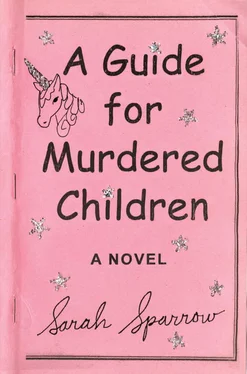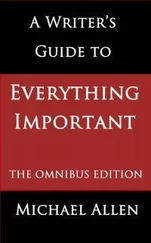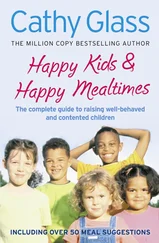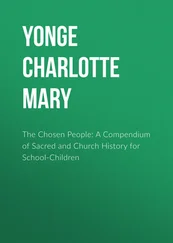Sarah Sparrow - A Guide for Murdered Children
Здесь есть возможность читать онлайн «Sarah Sparrow - A Guide for Murdered Children» весь текст электронной книги совершенно бесплатно (целиком полную версию без сокращений). В некоторых случаях можно слушать аудио, скачать через торрент в формате fb2 и присутствует краткое содержание. Город: New York, Год выпуска: 2018, ISBN: 2018, Издательство: Blue Rider Press, Жанр: Фэнтези, Триллер, Детектив, на английском языке. Описание произведения, (предисловие) а так же отзывы посетителей доступны на портале библиотеки ЛибКат.
- Название:A Guide for Murdered Children
- Автор:
- Издательство:Blue Rider Press
- Жанр:
- Год:2018
- Город:New York
- ISBN:978-0-399-57452-8
- Рейтинг книги:5 / 5. Голосов: 1
-
Избранное:Добавить в избранное
- Отзывы:
-
Ваша оценка:
- 100
- 1
- 2
- 3
- 4
- 5
A Guide for Murdered Children: краткое содержание, описание и аннотация
Предлагаем к чтению аннотацию, описание, краткое содержание или предисловие (зависит от того, что написал сам автор книги «A Guide for Murdered Children»). Если вы не нашли необходимую информацию о книге — напишите в комментариях, мы постараемся отыскать её.
A Guide for Murdered Children — читать онлайн бесплатно полную книгу (весь текст) целиком
Ниже представлен текст книги, разбитый по страницам. Система сохранения места последней прочитанной страницы, позволяет с удобством читать онлайн бесплатно книгу «A Guide for Murdered Children», без необходимости каждый раз заново искать на чём Вы остановились. Поставьте закладку, и сможете в любой момент перейти на страницу, на которой закончили чтение.
Интервал:
Закладка:
“Can I have a little coffee first?”
“At the airport,” said Maya.
“Is the airport even open?”
“The airport’s always open.”
“Why don’t I just buy our tickets online?”
“You can buy ’em on the way .”
“May I be so bold as to ask what’s in Minnesoda pop?”
“Rhonda.”
“Who?”
“ Rhonda’s in Minnesoda pop.” She’d already turned on the shower and was sitting on the toilet to pee. “Rhonda from the Meeting ,” she yelled. “He’s there—I saw him. Rhonda’s in St. Cloud . ”
2.
There was a 6:10 A.M. flight to Minneapolis–St. Paul; Metro Airport in Detroit was an hour away. The sky had no moon and they felt as if they were plunging through the black tunnel of a dream. It was almost like being on the train again.
“Do you want to tell me exactly what you saw?” said Daniel. “In your vision or your whatever…”
“Just him: Rhonda. He was rushing to meet someone in St. Cloud. He was going so fast—”
“Who was he meeting?”
“More shall be revealed,” she said, almost gleefully.
“Do you think it’s connected? That he’s connected? To us?”
“He has to be,” said Lydia. “It felt… too strong.”
“Do you know anything about Rhonda? What year she was murdered?”
Lydia knew what everyone else did about their fellow travelers: next to nothing. The Porter stressed that individual history (of landlords and tenants) was none of anyone’s business and a distraction from the moment of balance . What purpose would such knowledge serve, anyway? God—or as Annie called it, the Great Mystery—was definitely not in the details.
“I don’t know a thing about her,” she said. “But he’s a yoga instructor. I asked him once and that’s what he told me. Rhonda’s landlord, I mean.”
Daniel stared at the road ahead, deep in thought, with that connect-the-dots look. Lydia loved watching his wheels turn.
“Remember at the Meeting,” he said, “when Rhonda kept saying she wanted to know how she died?”
“I do,” she said pensively.
“I thought that was twisted. I mean, to be so insistent about it.” He paused. “I sure the fuck don’t want to know how I died.”
They were in the air about two hours. Lydia raised an eyebrow when Daniel ordered a drink. He got the message and the tiny bottle sat unopened.
The same irrefutable feeling that his sister experienced now saturated him: that Rhonda held the key. But could he trust such a thing? Before this, the nascent “visions” that presented themselves as exciting clues to the identity of their killers were ultimately exposed as no more than phantasms, a distorted series of headlines featuring the memories of the child-tenants Maya and Troy and their landlords, Daniel and Lydia. For example, Troy would find himself standing at a door that he was certain would open into the moment of balance , only to realize it led to rooms filled with the dark secrets that his landlord, Daniel, had suppressed: the hauntedness over murdering an innocent child in Afghanistan, the irrational guilt over the crib death of his son, his rage toward his estranged wife, even his shame at being impotent on that night he’d been scheduled to lose his virginity at age fifteen. The same thing happened to Maya, but for her the door was a beautiful wooden gate leading to a profusion of gardens. Each path she took uncovered Lydia’s secrets—the two abortions, the pain of an extramarital affair she’d had in her early twenties with a woman who was violent and possessive, her guilt over shoplifting at thirteen and lying to the police, knowing that her best friend would be taken to jail because of what she had told them.
They landed in the Twin Cities, rented a car and embarked on the hour-long drive to St. Cloud. It began to storm and they were quiet. Maya was behind the wheel. Daniel found a station that played classical music. They listened to Gregorian chants crackle in and out of reception.
About twenty minutes in, she swerved to an off-ramp.
“Hey now!” he said. “Starship Enterprise is off course.” He pointed far right. “St. Cloud’s thataway .”
“We’re not going to St. Cloud,” she said. “We’re going to Jacobs Prairie.”
3.
After teaching his 6:00 P.M. class at the studio called Lotus in Midtown Detroit, the African-American yoga teacher known at the Meeting as Rhonda—but to his students (and the DMV) as Ganesha Ashanti Sinclair—went to the movies at a local revival house. “Ganesha” was the name bestowed upon him years ago by a guru at an ashram in Bangalore; when he returned from his South Asian sojourn to Detroit, he added “Ashanti” in homage to his Ghanaian ancestors. The appellation suited his sportive, free-spirited nature and made him smile. It seemed to make a lot of people smile.
About an hour into The Man Who Would Be King (he’d always been fond of Kipling and loved any adventure story that took place in a faraway land), he left his seat to buy more bonbons. His students still couldn’t believe that their Ganesha, who treated his body like a temple, had developed a thing for the frozen chocolate treats that were Rhonda’s favorites. In the last four months, they’d noticed a host of new quirks, reflecting a childishness in him that struck some of them as puzzling or even pretentious. Many, though, took the new behaviors as a refreshing indication that their teacher had entered a higher, if playful, spiritual plane. He was on his way back into the theater when he bit down on one of the ice-cold nuggets and simultaneously had a stereoscopic vision of the man who had killed him—killed Rhonda, rather—and where that person could be found.
He immediately left.
He drove toward I-75S on a route that allowed him to skirt the toll roads. Flying under the radar was paramount because Annie cautioned her flock about the importance of not being identified or linked in any way to the homicide called the moment of balance . (She aimed this caveat more toward the landlords; their child-tenants would not possess such savvy.) The Porter said there would be terrible consequences if one was caught in the act or traced to the crime itself. Even though the landlords would have expired by then—traditionally, the “second,” final death occurred in the hours following the moment of balance —such a revelation would cause unnecessary hurt, shock and confusion to their surviving loved ones. Annie referred everyone to the section of the Guide that addressed itself to the essentialness of respect shown not just to landlords but to the friends and family of those borrowed bodies as well. The Porter said that “invisibility and discretion” were almost as crucial as the deaths of the child-killers themselves.
Because of the storm, his eleven-hour drive from Detroit took fifteen. It was Ganesha who planned and strategized the trip, the way adults do; Rhonda, child and tenant, provided energy and purpose, the propulsive vision informing the whole enterprise. As he navigated the blurry hodgepodge of rain-slicked highway and staccato brake lights, Ganesha meditated on his life. What an amazing journey it had been! His twin brother was in prison, a quarter way into a sixty-year sentence, but the yogi had taken a different path. Ganesha was gay and didn’t come out until his early twenties, after traveling to India. He spent three years exploring the continent before being graced to find his guru. Now thirty-one, he taught yoga five days a week and on Saturday nights played jazz piano at Cliff Bell’s (when they’d have him). He collected pottery and had even been looking into classes with the view of designing his own when his tenant, Rhonda, arrived.
Читать дальшеИнтервал:
Закладка:
Похожие книги на «A Guide for Murdered Children»
Представляем Вашему вниманию похожие книги на «A Guide for Murdered Children» списком для выбора. Мы отобрали схожую по названию и смыслу литературу в надежде предоставить читателям больше вариантов отыскать новые, интересные, ещё непрочитанные произведения.
Обсуждение, отзывы о книге «A Guide for Murdered Children» и просто собственные мнения читателей. Оставьте ваши комментарии, напишите, что Вы думаете о произведении, его смысле или главных героях. Укажите что конкретно понравилось, а что нет, и почему Вы так считаете.












